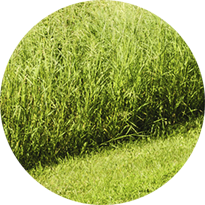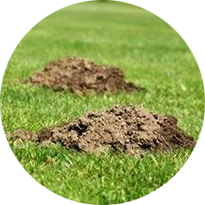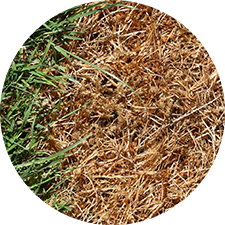

The battle for a weed free lawn start prior to sowing. Once soil is levelled, wait until weeds germinate and then apply herbicides. Without our help grasses will always loose the battle against weeds. Particularly perennial weeds can be difficult to control. It is possible to control them effectively using pesticides available on the market. The use of chemical weedkillers is always the last resort, which one should reach for if the desired results are not achieved using manual weeding. Safe use of selective herbicides is possible six months after the appearance of a lawn.
For best results spray turf during warm weather. During spraying soil should be moist. Remember to apply nitrogen fertiliser to lawn after using weedkillers.

Moles are frequent unwanted guests at our lawn. Moles damage lawns by burrowing tunnels under lawns and making mounds on the surface. Molehills (mounds) make it difficult to care for your lawn – particularly when it comes to mowing.

These may appear when seeds after sowing have not been covered by a layer of sand and as a result of which have been blown away by the wind or washed out by a stream of water during watering.
A lawn will grow in tufts if too fee seeds were sown or the seeds were covered too deeply. Incorrectly prepared soil may also cause tufts – not raked, compact lumps of earth.
May appear as a result of a fungus infection – damping-off, which favours: compact dense sowing, excessive soil moisture and low temperatures.
This disease most often appears on clay soils. Young blades fall over, yellow and die. Turf should be sprayed with a fungicide recommended for this disease. This disease may also appear when the soil may ill-prepared – the turf covers post construction rubble, tree trunks; subsoil layer protrudes to the surface; there are mineral shortages in the soil – usually due to a failure to apply pre sowing fertiliser. The solution here is to apply foliar feeding (paying due care and attention).

These are usually the consequence of incorrect soil preparation. Rain and streams of water may cause furrowing and dents – if small cover with sand, larger ones should be covered with earth and grass seeds should be sown again.



